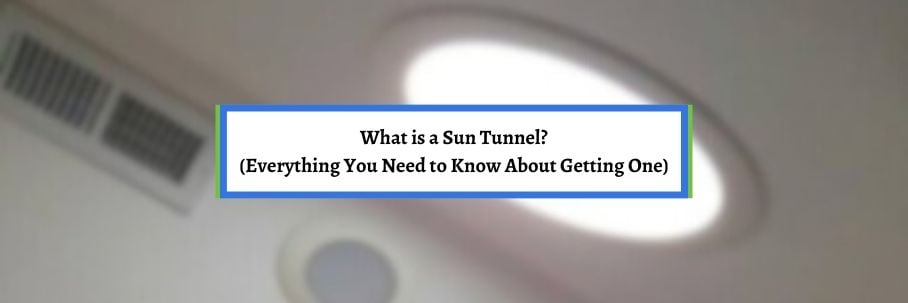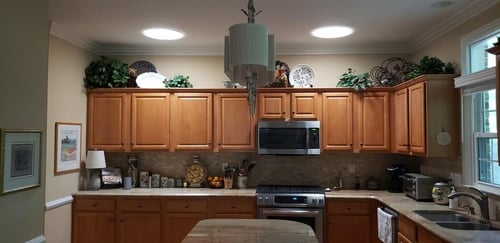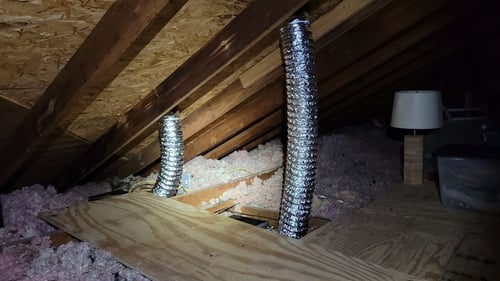What is a Sun Tunnel? (Everything You Need to Know About Getting One)

The popularity of adding more natural light to homes with skylights has skyrocketed in recent years. As great as they are, it doesn’t mean traditional skylights are right for every situation.
This is where sun tunnels come in as an alternative. But what is a sun tunnel? And what do you know about getting one?
For over 30 years, Bill Ragan Roofing has helped homeowners make the right purchasing decisions based on budget, situation, and everything in between. That’s why I’ll break down everything you need to know about sun tunnels to help you decide if it’s the right natural light option for you.
This article answers the following questions about sun tunnels:
- What is a sun tunnel?
- How do sun tunnels work?
- How is a sun tunnel installed?
- How much light does a sun tunnel provide?
- How much does it cost to install a sun tunnel?
- Do sun tunnels qualify for the Federal Solar Tax Credit?
What is a sun tunnel?
A sun tunnel is a type of skylight with an acrylic dome connected on one end of a pre-fabricated tube with a light diffuser on the other end. Unlike normal skylights, sun tunnels don’t need direct sunlight to add more natural light to a room.

There are two types of sun tunnels (flexible and rigid), but the one you’ll get only depends on the space between your roof and ceiling. A flexible sun tunnel is used when the tube needs to be manipulated around things to connect the diffuser and dome.
On the other hand, rigid sun tunnels are used when there is a straight shot from the roof down through the ceiling. While the type of sun tunnel depends on space, you’ll get to choose the diffuser that fits the aesthetic you want.
How do sun tunnels work?
Sun tunnels utilize the law of reflection by taking light and directing it in a certain direction off reflective surfaces. They do this by capturing light with the acrylic dome on the roof, magnifying it, and then sending it down the tube into the light diffuser on the ceiling.
 (Flexible solar tube)
(Flexible solar tube)
The metal tube’s interior acts as a continuous mirror, channeling sunlight down the length of the tube without diminishing any intensity. The light won’t be as strong as direct sunlight coming in through a window or skylight, but it’ll still be strong enough to light any dark room in your home.
How is a sun tunnel installed?
Remember, the type of sun tunnel you’ll get is determined by how it’ll be installed based on the attic space. However, the installation process is pretty much the same for both.
Below are the basic steps to install a sun tunnel:
- Holes are cut in your roof and ceiling (directly under the hole in the roof)
- The tube is fitted down into the hole
- The acrylic dome is installed on the roof side of the tube
- The light diffuser is installed on the ceiling end of the tube
After installation, it will look like a mounted circle with a covered light bulb on your ceiling. The entire process takes 3 hours from start to completion with two people.
However, a rigid sun tunnel may take longer if there are large or multiple obstructions to work around.
Do sun tunnels leak?
Just like every other thing that’s installed on your roof, it’s possible for sun tunnels to leak. However, most leaks happen because of improper installation or lazy workmanship.
There could also be problems with the acrylic dome or the flashing around it to keep it watertight. Other than that, a sun tunnel will stay leak-free as long as the materials hold up.
Obviously, they won’t last forever. All sun tunnels will be replaced at some point when the acrylic dome (around 10 years) and/or tube (around 20 years) fail.
How much light does a sun tunnel provide?
Traditional skylights are direct windows to the outdoors, which means they let in plenty of natural light. However, a sun tunnel is a closed-off tube instead of a large glass pane.
A sun tunnel won’t let in as much light as a traditional skylight, but it still provides enough to light dark rooms in the middle of a home. That’s why you need to think strategically about the room it’s installed in.
I recommend sun tunnels for rooms in the middle of a house that don’t receive any natural light. This includes hallways, laundry rooms, utility rooms, dark kitchens, bathrooms, large closets, etc.
How much does it cost to install a sun tunnel?
You can expect it to cost $850 to $2,250 to install a new sun tunnel. The two factors that impact where you'll fall in the price range above are the labor and cost of the materials (acrylic dome, tube, light diffuser).
However, the biggest factors are the length of the reflective tubing, the type of acrylic dome, and the labor for installation. Just know this is a general estimate from VELUX (the leading skylight brand).
While the materials will be around the same price for most manufacturers, the labor costs of individual contractors is where the big price differences are. That’s why the final price will ultimately depend on the roofing contractor you hire.
Do sun tunnels qualify for the Federal Solar Tax Credit?
The Federal Solar Tax Credit allows you to deduct 30% of installation costs on solar energy systems. Sun tunnels do qualify for the Federal Solar Tax Credit, but something about it must be solar-powered.
Unfortunately, there’s not much you can add to get the tax credit. For example, VELUX's sun tunnels' only solar-powered option to qualify is the solar night light.
If qualifying for the Federal Solar Tax Credit is important to you, you may want to consider a skylight. They come with plenty of accessories, and even the skylight itself, that give you the opportunity to get the tax credit.
Is a sun tunnel or skylight right for you?
Now you know what a sun tunnel is, how it works, the installation process, if they leak, and how much it costs to get one. You also learned that they do qualify for the Federal Solar Tax Credit, but they don’t come with many options to do so.
A sun tunnel is the quickest way to transform any room with natural light, but that doesn’t mean it’s the best option for your situation. Some homeowners want a sun tunnel until they realize it doesn’t let in as much light as they think.
Some want a skylight in a certain room, but the space is really only right for a sun tunnel. Whatever the reason, you need to know how sun tunnels compare to traditional skylights to determine which one is right for you.
Check out Skylight vs. Sun Tunnel: Which Natural Light Option is Right for You to help you decide which one is best for you and your situation.


